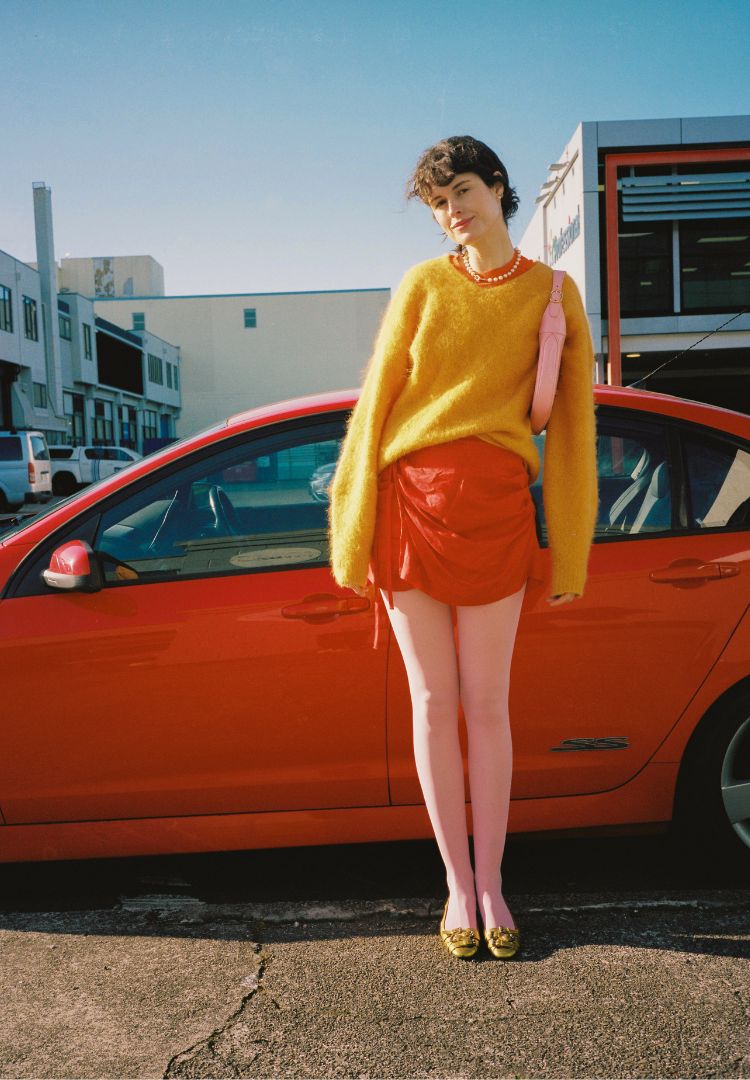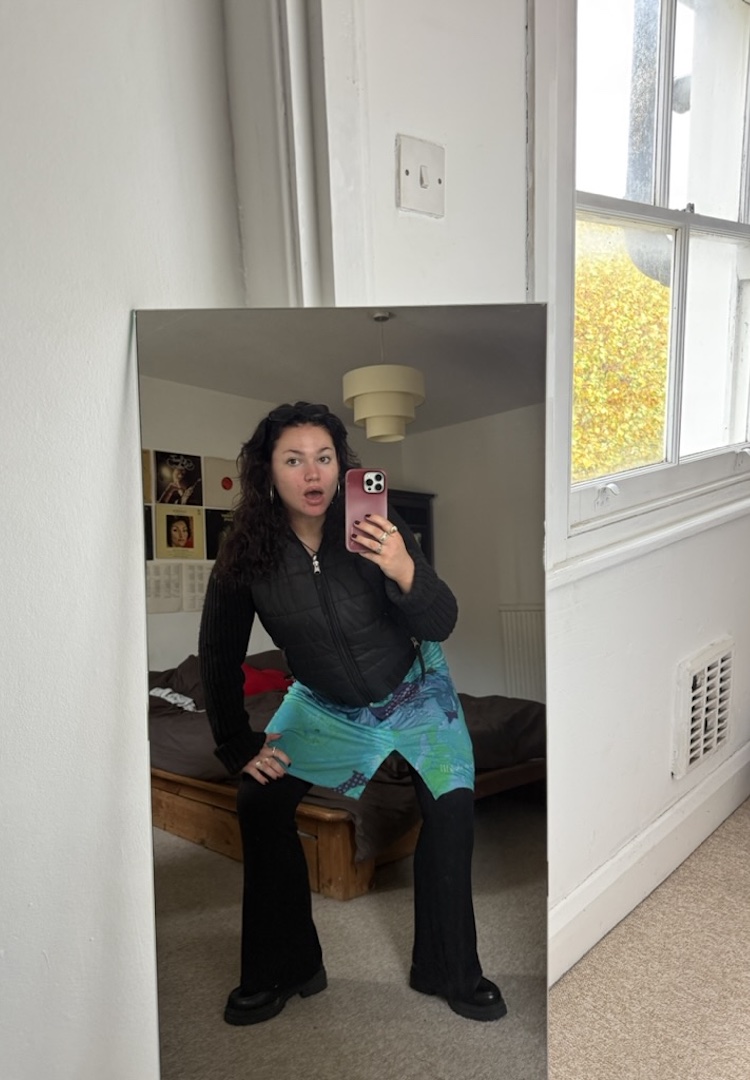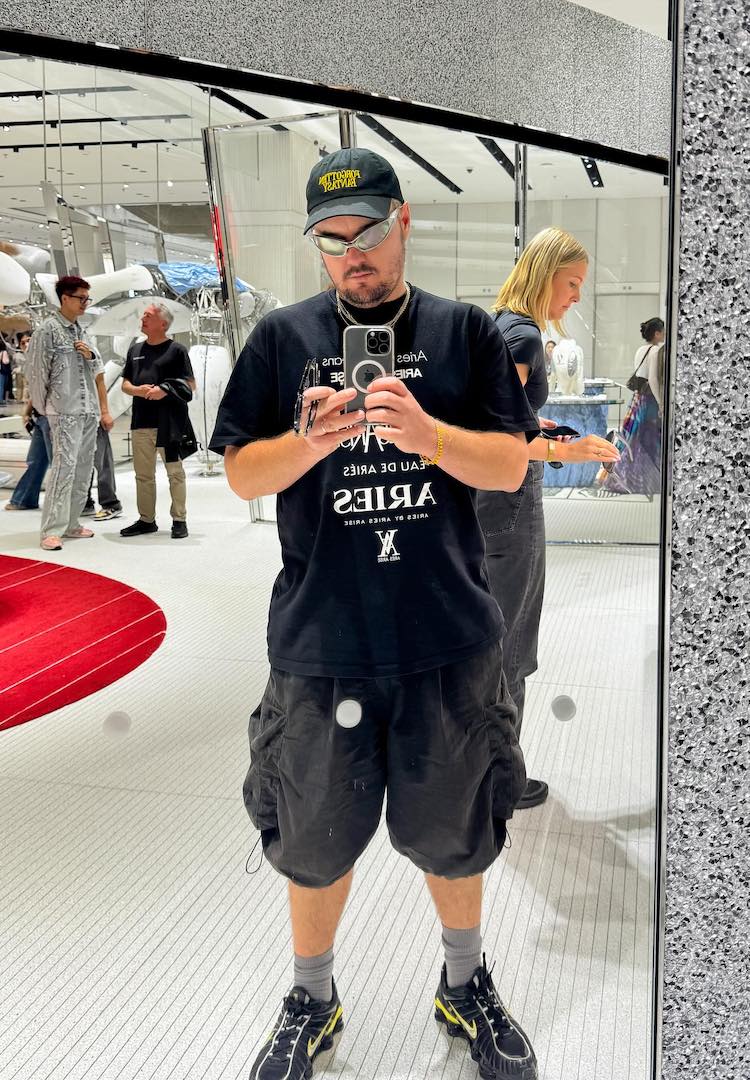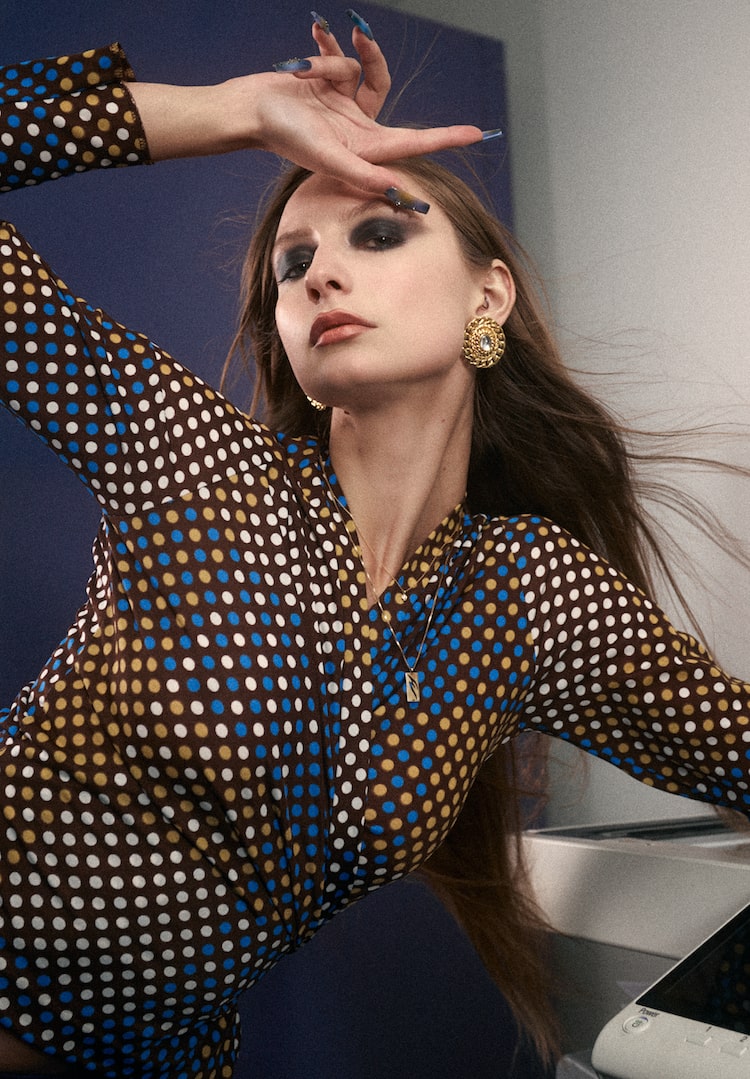How I Got Here: Fashion writer Hayley Peppin on the freelance shift
image via @hayleypeppin/INSTAGRAM
as told to daisy henry
“I don’t pray to fashion’s altar.”
Have you ever stalked someone on LinkedIn and wondered how on earth they managed to land that wildly impressive job? While the internet and social media might have us believe that our ideal job is a mere pipe dream, the individuals who have these jobs were, believe it or not, in the same position once, fantasising over someone else’s seemingly unattainable job.
But behind the awe-inspiring titles and the fancy work events lies a heck of a lot of hard work. So what lessons have been learnt and what skills have proved invaluable in getting them from daydreaming about success to actually being at the top of their industry?
Looking for a new 9 to 5? Head to our Careers page for new listings daily.
Welcome to How I Got Here, where we talk to people who are killing it in their respective fields about how they landed their awe-inspiring jobs, exploring the peaks and pits, the failures and the wins, and most importantly, the knowledge, advice and practical tips they’ve gleaned along the way. For this instalment, we hear from fashion writer, Hayley Peppin.
One look at Hayley’s feed will likely ignite the envy of aspiring fashion writers everywhere. At first glance, it’s a glamorous reel of stylish outfits, trips to European cities, coveted bylines and industry events. It’s not totally removed from reality – when you’re a freelance writer based in London with a CV as impressive as Hayley’s, there are plenty of perks to the job.
Though at the same time, life as a freelancer has its downsides. Having worked as Digital Content Manager of Harper’s Bazaar and Esquire Australia, Hayley has a unique insight into the ever-shifting media landscape. From tight budgets and commercial pressure to the rise in ChatGPT and AI, she admits its a tough transition going from full-time to freelance.
“For those riding solo like me, [it] can manifest into deep-seated financial and emotional insecurity when days, weeks, maybe months pass without consistent editorial commissions,” Hayley says. “In those quiet, isolating stretches, you start questioning your value, relationships and even your talent.” But then, an email, invitation or article can just as easily flip the switch.
View this post on Instagram
Fashion Journal: Hi Hayley! Tell us a little about who you are and what you do.
Hayley: I’m a London-based (for now) freelance writer and editor, formerly Digital Content Manager of Harper’s Bazaar Australia/New Zealand and Esquire Australia. I cover fashion, culture, lifestyle, and design — from profiles and long-form features, to analyses, trend reports and more.
Did you have an idea of your dream job growing up?
I wish I had a more poetic origin story but I was one of those rare breeds who knew from day one what she wanted to do. I was a voracious reader and loved watching the news with my parents, so the idea of being a writer or journalist of some description lodged itself in my brain early.
I wrote flowery fiction stories constantly and would peer-pressure my friends into listening to dramatic readings of them, complete with theatrical accents, from start to finish. Even in year three, during a professionally filmed school project, I insisted upon playing a red carpet interviewer at the ARIAs (my eight-year-old self would be thrilled to know I actually did that years later).
While I wasn’t totally across what a career in media could look like back then, by year ten I’d started working towards my dream uni course in journalism. I’d also watched The Devil Wears Prada, Confessions of a Shopaholic, Morning Glory, and Sex and the City far too many times, seduced by the grind of it all. So I took on the relevant communications subjects, read endlessly, wrote whenever I could and sought-out any school-approved internships I could find.
View this post on Instagram
Take us back to when you were first starting out. Did you start as a junior and climb the ranks?
I studied journalism at RMIT University, which meant moving from my hometown of Adelaide to Melbourne. RMIT’s renowned for its placement program, so I landed internships with Channel Nine and Ten News in Melbourne, then Marie Claire Australia and The Morning Show in Sydney. I was desperate to work and each experience added the perfect portfolio fodder: digital bylines, mock newsroom packages and even a live Mardi Gras sketch alongside the Courtney Act. But it was the thrills and gravity of breaking news that hooked me. After anchoring Newsline, RMIT’s live news program, I knew I wanted to get into broadcast.
Fresh out of uni, I became a television reporter at Win News in Victoria’s Gippsland region. Although my heart was in Melbourne, juniors were rarely given on-air roles in metro networks, so my ambition took me to the country. At 21, I was filing two news packages per day across crime, politics, health and human interest, interviewing people like former deputy prime minister, Bill Shorten.
At 23, I decided to move to London on a Youth Mobility Visa. I had big dreams of working for the BBC but was told my Aussie accent was a dealbreaker (this was in 2019). Instead, I pivoted from broadcast to digital and landed a coveted Entertainment Reporter role at Insider, where I developed a love for online media, fashion, lifestyle and culture writing.
View this post on Instagram
The pandemic begrudgingly brought me back to Melbourne, where I freelanced for US celebrity publications, before pitching a story on my mental health to Harper’s Bazaar. That story turned into a role as a full-time contributor, then Digital Content Manager of Bazaar and Esquire Australia. Now, I’ve gone full-circle, back to one of my great loves: London.
Can you walk us through a typical day in your life as a freelancer right now? What are some of your daily tasks?
Typically, my morning usually starts with an at-home workout (via app or a short run), followed by jotting a to-do list in my diary. I’m a visual learner and can’t rely on my memory alone. Then it’s inbox maintenance: replying to quick wins and flagging bigger items, such as PR travel opportunities that need an editorial commission before take-off.
After a coffee or grocery run, I’ll get on the tools and start firing a round of pitches, diving into a paid piece or getting stuck into a Substack idea if commissions are slow. Some days include coffee dates with PR reps or editors, other days it’s all about events and launches. And when inspiration hits, I’ll burn the midnight oil. And if I’m lucky, I might even be working with a view of Positano from my window.
View this post on Instagram
What would surprise people most about the realities of working as a fashion writer?
I’m going to be super real here. Speaking from my own experience and from the experiences of others at a similar career stage, it’s pretty tough right now to go from full-time staff writer or editor to full-time freelancer. Staffed teams are well-oiled machines, working with much tighter budgets and are more commercially focussed than ever. That means less money to commit to freelancers (usually digital stories or social content) and more pressure to appease advertisers. They’re also competing with ChatGPT and Google AI summaries now, which have chipped away at digital traffic, leaving less space for outsourced, original work.
For those riding solo like me, that can manifest into deep-seated financial and emotional insecurity when days, weeks, maybe months pass without consistent editorial commissions. You’ll swing from, “Can I afford drinks this weekend?” to “Maybe if I’d changed that one sentence, the pitch would have landed”. In those quiet, isolating stretches (freelancing is a solitary job after all), you start questioning your value, relationships and even your talent, no matter how you got your last win.
Then, something small can flip the switch: an invite to a work event, a connection someone kindly shares with no expectations, even a simple email acknowledgement (because digital silence is deafening). But nothing beats a paid commission — a reminder that it’s not necessarily you, it’s the industry.
View this post on Instagram
What is one major career highlight or pinch-me moment you’ve had so far?
For all the challenges, there have been many pinch-me moments. Interviewing icons like Zendaya, Naomi Campbell, Julianne Moore and Lauren Hutton have been surreal, as has attending the ‘big five’ fashion weeks. Last year, I soaked up Copenhagen, London (the Burberry show and after-party were unreal) and Paris, which thrilled The Devil Wears Prada devotee in me.
Then there was The Fashion Awards at London’s Royal Albert Hall, where Bazaar Australia’s Ruby Stephens and I interviewed celebrities and designers on the red carpet before slipping inside to watch the night unfold. Basking in Rihanna and A$AP Rocky’s presence was worth every shiver I got from the U.K’s December chill.
View this post on Instagram
What are some major differences you’ve noticed between Australian and British style since moving back to London?
While equally stylish, I find British style, at least in London, to be more defined, individual and a touch more rebellious. It’s less about the perfect aesthetic or following every trend and more about edge. Londoners have this almost innate knack for layering and contrasting, which is partly due to the city’s spectrum of seasons but also because they rarely wear the one brand head-to-toe.
They’re effortlessly mixing high street with high-end, formal tailoring with casual silhouettes. And they wear memories like accessories, each piece a chapter in their own style anthology. It’s a perfectly imperfect jumble: a Reformation cami with HommeGirls boxer shorts, a Burberry trench, Puma Speedcats, a vintage Brick Lane-sourced bag and mismatched metal trinkets picked up in Greece and Portugal. London style’s about texture, grit, softness, print, plain and not caring what anyone thinks. It’s a mindset more than anything. They’re not drinking the Instagram Kool-Aid.
View this post on Instagram
What kind of role does fashion play in your life? Do you prefer just writing about it, or do you invest a lot of time in curating your wardrobe?
I don’t pray to fashion’s altar. Before Bazaar, I wasn’t studying collections or analysing runway reports. However, I’ve always been drawn to fashion that came before my time, like my parents’ and grandparents’ era. Mary Quant’s mini skirts were political statements, Penny Lane coats were social statements and Rabanne chainmail dresses were disco art. Fashion then felt unrestrained, sensual and spiritual, worn for love, not likes. I try to keep a similar ethos.
Now, my relationship with clothes is sharper than ever. I rarely buy new. It’s partly a budget thing, partly a London storage reality thing, so I’ve gotten pretty close to my wardrobe. I remix grey tank tops with tailored trousers and vintage blouses, and lingerie slips with long-loved white crepe pants. My Saint-Tropez charm necklace now doubles as a belt with the right bottoms and a few bobby pins. I feel freer, sexier and more myself than ever — probably because I dress for me, not the feed.
View this post on Instagram
Do you believe in ‘dressing for the job you want’?
I believe in dressing for the culture you’re in, in a way that works for your style, body and budget. If you’re starting a new office media job, skip the TikTok rabbit holes (I’m talking ‘office siren’ or ‘corporate vixen’) and keep it simple with a crisp white shirt, tailored black pants and pointed mules. Suss the vibe first, then decide if jeans or slips can be part of your everyday armour.
In my experience, fashion mags and digital media embrace personal style and bare-faced looks way more than TV news. In television, I was donning pantsuits, full makeup and curling my hair daily. Now, I wear what I would off-duty, sometimes bra-less for comfort but always with a sense of polish. People remember style not specific clothes.
View this post on Instagram
What’s your approach on dressing for Fashion Week? Do you have a go-to outfit or designer, or do you consult a stylist?
Dress for Fashion Week like you’d dress exploring the city. You don’t need to go ham with It-items, designer this or sartorial clichés. Most of us subconsciously mirror the environments we’re in anyway.
I’ll roughly plan a few city-aesthetic pieces to avoid last-minute panic. Sometimes I’m gifted stuff (but I’ll only ever accept pieces authentic to my style and beliefs), other times I ad lib with what’s in my wardrobe. No stylist, no formula. That said, I do have a ridiculously sultry black tuxedo by Farage that works wonders for an afterparty. The best street style, at least to me, looks less like a costume and more like an energy — it’s you but in Copenhagen.
What are the most expensive and least expensive items in your wardrobe?
My most expensive pieces are the sentimental ones: a Valentino Rockstud Spike bag in the designer’s signature red and a Gucci Diamantissima watch in Mother of Pearl — both treasured gifts for my 21st birthday. And my mother’s diamond ring, though I don’t know the value. I know she scrupulously saved up for it in her 30s and now I wear it everyday. No matter where I am, she’s with me, which makes it priceless.
Least expensive? Probably something Zara, like my mesh or fisherman sandals which are in constant rotation. But if we’re talking cost-per-wear, it’s my aviators: classic tortoiseshell by Rhodin, a bug-eyed, orange-tinted pair by Quay and yellow reflectors from Portobello Road Market.
View this post on Instagram
What advice would you give to someone who wants a career like yours one day?
Dream big, be shameless and stay grounded. Find an editor’s name and pitch them — cold email, DM, or even ask for a quick career chat coffee. They won’t have time but you might just linger in their minds. Don’t underestimate your social network, either. Call-outs on Instagram or LinkedIn can always lead to jobs or commissions. And follow newsletters for opportunities — Sian Meades-Williams has a great one for UK titles.
I’d also suggest writing constantly. Read, watch, listen to everything. Build a portfolio with whatever you’ve got: uni clippings, copywriting samples, even Substack posts. Remember rejections happen, even to the best writers. The local industry’s tighter than ever, from smaller teams to smaller budgets, so keep a side hustle for stability, whether that’s copywriting or a casual hospitality job. Channel the rest of your energy into pitches or stories.
Media’s transient, opportunities ebb and flow. I landed my first Bazaar commission by pitching at the right time. Be aware, not afraid… except, when it comes to choosing your work-friendly cafe. Nothing kills a work vibe than a barista telling you off mid-flow.
Keep up with Hayley here.













